Palm washingtonia: description, types, care features

Ornamental plants such as the indoor palm always attract a lot of attention for their unusual beauty. Washingtonia palm is no exception. Let's find out in more detail about the varieties of the flower and the rules for caring for it.
Peculiarities
As a houseplant, Washingtonia palm began to be used more recently. Indeed, in its natural environment, it grows in the open field. Its true homeland is sunny Mexico, as well as the United States of America. It belongs to the palm family and is valued not only for its attractiveness, but also for its cold resistance. This palm tree can withstand frosts up to 5 degrees, which is not inherent in every species.
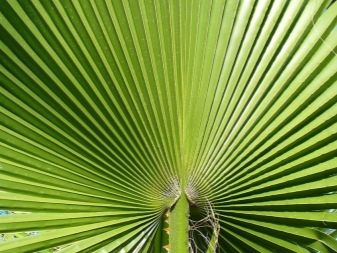
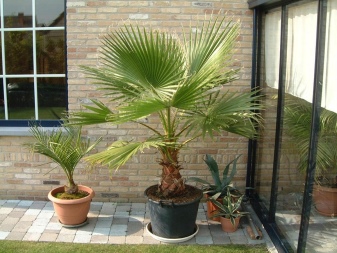
For this reason, it is often planted along alleys in places where the climate is milder. In the open field, such a plant can grow up to 30 meters. If we talk about countries where winters are too harsh, then palm trees can only be seen in winter gardens or cool halls. Most often, young seedlings are used for this.
The trunk of the Washingtonia palm tree is thin, moreover, completely covered with petioles remaining from the leaves, which makes it rather rough to the touch. The huge leaves have an almost perfect structure, reminiscent of a symmetrical fan. They are divided into separate segments, connected by thin "threads" of leaves. All leaf petioles have hard thorns that can even be dangerous. When the leaves dry up, they do not crumble, but remain on the tree trunk and wrap it up like a skirt. Various rodents or birds often spend the night under them.
So that the palm tree does not lose its attractiveness, gardeners try to remove dry leaves in time.
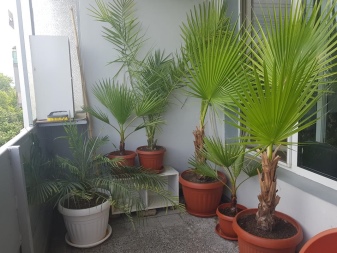
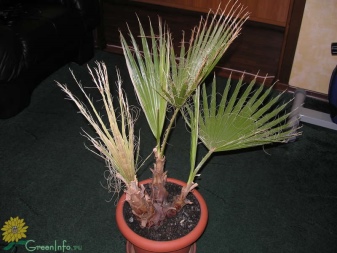
Types and varieties
Gardeners know only a few types of this palm tree, which are worth familiarizing with in more detail.
Thread-bearing
Such a tree is often called filamentous or "filifera washingtonia". The leaves of this palm tree have a gray-green hue, and also consist of a large number of thin threads, snow-white in color. This type of palm differs from its “colleagues” in its beautiful flowering. However, it does not happen as often as we would like it to be.


Robusta powerful
It belongs to tall plants, because in some cases its height reaches 30 meters. Unlike the previous species, the powerful palm has a thinner trunk, and the crown of the plant, on the contrary, is more branched. Its leaves are colored bright green, and the petioles are light brown. In addition, the amount of fiber in this type of palm is significantly less than that of the filamentous type of palm.
A variety such as "Santa Barbara" is suitable for growing at home.
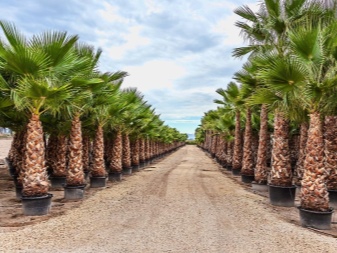
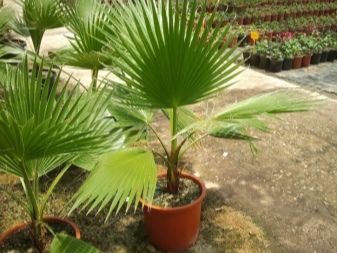
How to plant?
To grow such a tree at home, you need to go through three stages. First of all, prepare the planting material, then sow the prepared seeds, and then provide proper care - first for the seeds, and then for the seedlings and sprouts. The ideal place to place a palm tree is considered to be a window located on the west or east side. In addition, the plant must be protected from drafts, but at the same time it must have access to fresh air.
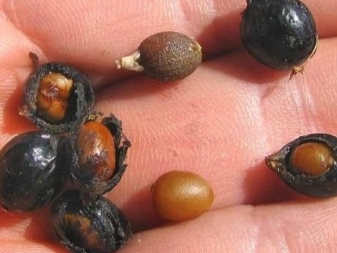
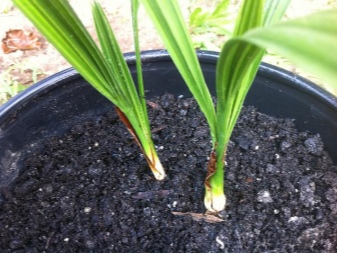
Subtleties of care
At home, the Washingtonia palm tree develops very quickly. Its height reaches 3 meters, but in some cases the height is 7 meters. It is important to keep it in good condition, and it is also necessary to look after it very carefully.
Lighting
Since the palm tree is a fairly light-loving plant, it will need a lot of sun. Gardeners do not recommend placing flowerpots with young seedlings on the south side so that they do not overheat in the summer. After a certain period of time, you need to turn the palm tree in different directions to the sun's rays. This will allow the beautiful crown to grow evenly. With the onset of warmth, the palm tree can be placed on the balcony or on the terrace. However, the place where it is located should in no case be too damp. Otherwise, the palm tree will simply disappear.
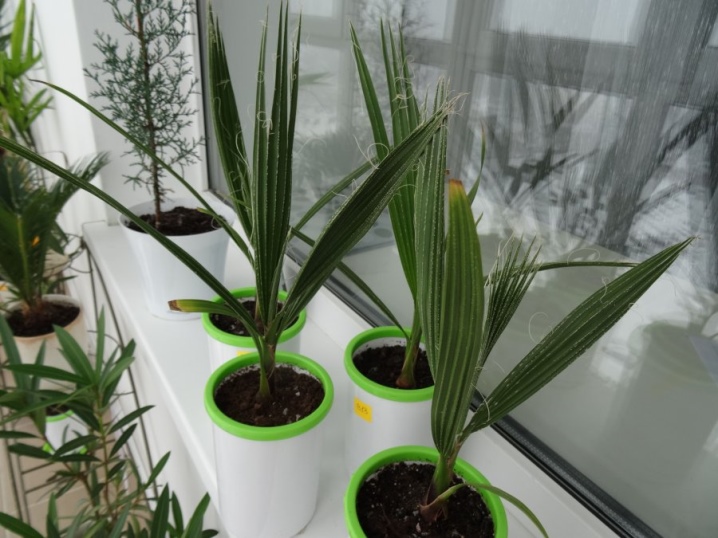
Temperature regime
Palm Washington does not like warmth too much. It will grow well at a temperature of 25 degrees. In winter, this "small tree" comes to rest. Therefore, even when keeping it at home, you will need to reduce the air temperature to 10 degrees. In addition, you need to know that for a string palm, the temperature should fall at least 5 degrees, but for the second type - not lower than 8 degrees.
In the case when the plant is on the balcony or in the hall of the room, it is better not to lower the temperature. It is enough just to protect the palm from drafts.

Humidity
A decrease or increase in humidity is not at all important for this type of palm. After all, it can grow with dry air and with sufficient moisture. If there is enough moisture, the leaves will not dry out and the plant will grow much better. However, with too much moisture, fungal diseases can appear. Experienced gardeners recommend not to water the leaves, but to spray or wipe with a damp cloth.
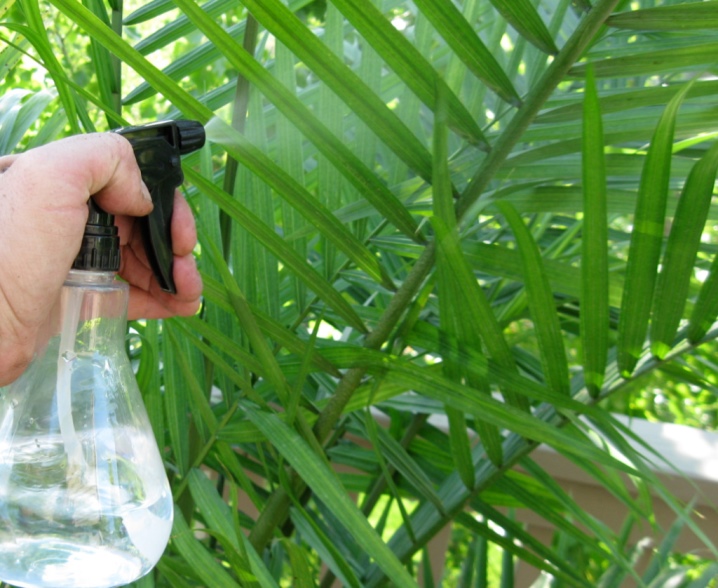
Watering
As for the amount of moisture, it will take a lot. In addition, you can water the ground and spray. Dry soil will cause the tips of the leaves to become dry. In any case, it is worth avoiding stagnant water, as well as ensuring good air circulation. To do this, you will need a drainage system, which can make up almost a third of the flowerpot. But in winter, it is best to reduce watering. Still, you need to ensure that the soil does not dry out.
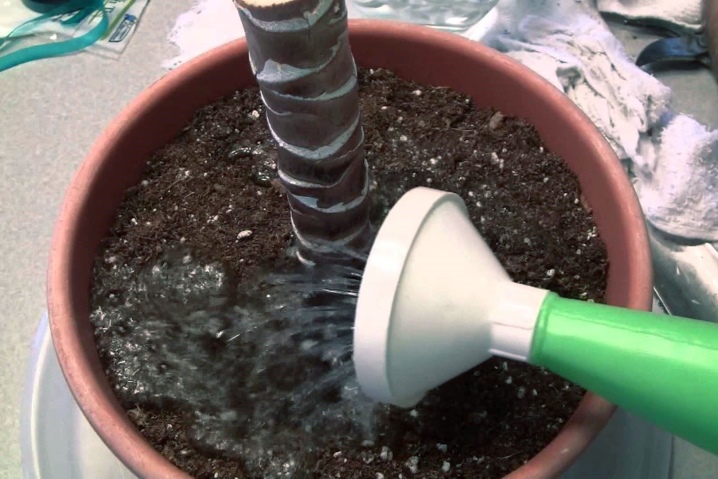
Pruning
Pruning can only be carried out after the petioles are completely dry. In addition, this must be done very carefully so as not to injure your hands on the sharp thorns that are on the stem. You need to cut off both broken and dry leaves, as well as those that have already bent quite low. In addition, it is worth removing all additional shoots, as the main shoot may stop growing. It is not necessary to remove those leaves that are only partially dead. Indeed, thanks to them, the palm also receives nutrients.
It is imperative to follow the process so as not to damage the trunk of the plant when pruning.
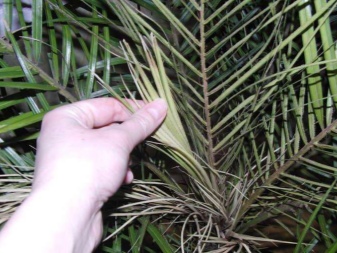

Transfer
The Washingtonian palm tree does not tolerate the transplanting process itself very well. Therefore, everything must be done very carefully. The soil must be changed with extreme care. Young trees are transplanted no earlier than 2 years after planting. Then the sequence is as follows. Up to 7 years, it is carried out once every two years, and then after 3 years or when the roots begin to creep out through the drainage holes. If the palm tree has been growing for more than 15 years, then the transplant should be carried out only after 5 years. After all, a more mature plant tolerates it very badly. It is best to replant the plant in early spring or late autumn. This will require a large pot. A drainage layer must be laid out at its bottom. The next layer is to put a substrate, which will consist of the following components:
- 2 parts deciduous humus;
- 2 pieces of turf;
- 2 parts of animal humus;
- 1 part fine sand;
- a small amount of special growth additives.
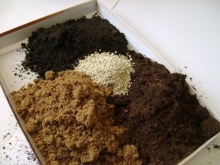
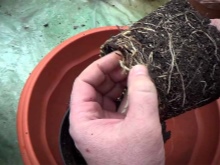
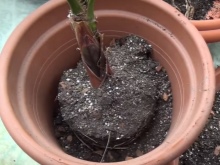
When everything is ready, the plant must be very carefully removed from the flowerpot. This must be done so that the earthen lump is not disturbed. Then the root system must be carefully transferred into the prepared pot.Next, you need to add earth from all sides and tamp everything very well.
Reproduction methods
Since the Washingtonia palm tree never gives side shoots, it is most often propagated from seeds. When the flower fades, fruits will appear in its place, from which seeds can be obtained. By themselves, they are small and oval in shape. In order to germinate them at home, you will need a substrate of fine sawdust, coarse sand, and peat, taken in equal parts. In addition, you need to take a container with high sides. Before planting, old seeds should be slightly scratched or rubbed with emery. After that, they need to be soaked for 24 hours in water at room temperature. So they can sprout much faster. But if the seeds are only taken from the fruits, then this can not be done.
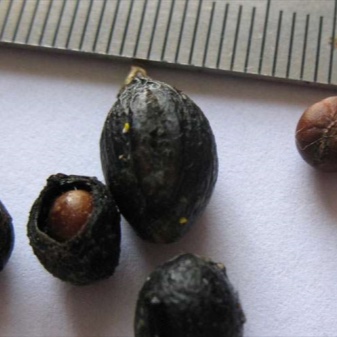
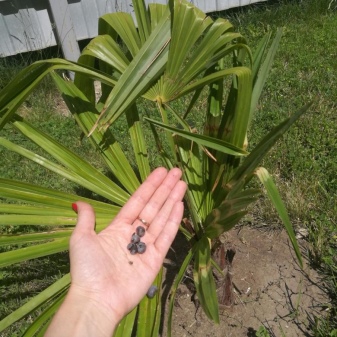
Planting depth should be no more than 1 centimeter. After sowing, everything must be thoroughly watered. You do not need to sprinkle them with earth, it is enough to cover everything with transparent film or thin glass. Then the container must be placed in a warm place where the air temperature will not exceed more than 27 degrees, and the air humidity will be moderate. In addition, ventilation must be carried out daily. To do this, open the film or glass for a few minutes and then cover it again. This will allow you to avoid the appearance of various fungal diseases in the future.
In that case, if the seeds are fresh, the first shoots will appear in 14 days... But if the seed is old, then they will appear only after 2 months. After germination, the container must be placed in a well-lit place. However, direct sunlight should be avoided. Fortified seedlings must be dived, that is, divided and planted in separate containers, the diameter of which will be equal to 8 centimeters. Everything must be done with extreme caution so as not to damage the not yet strengthened root system.
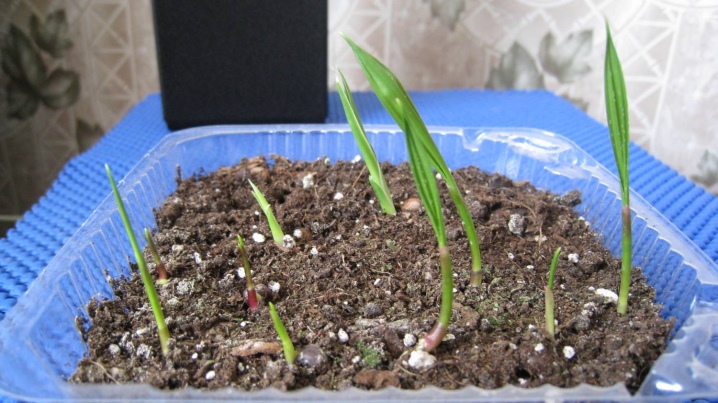
Besides, there are also other cultivation options... For example, peat tablets can be used for germination. Only one seed should be placed in them. Then the tablets must be laid out on the ground. When sprouts appear, they can be sprinkled with earth and on top. In both cases, you can treat the seeds with a special growth stimulant so that they germinate faster.
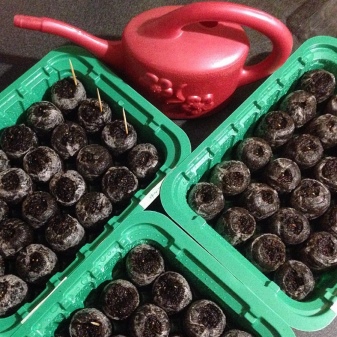

Diseases and pests
Despite the fact that the palm is a rather hardened plant, it can still be subject to the appearance of fungal diseases and the attack of various pests. As for the first point, it will require proper watering. This is the only way to avoid diseases. Among the pests, the following are worth noting.
- Mealybug. It is a small insect that feeds exclusively on plant juices.
- Spider mite. Experienced gardeners classify it as a very serious pest, despite its small size. He also feeds on the sap of the plant, while entangling the leaves with cobwebs.
- Whitefly. This is a rather dangerous polyphagous insect that can be seen even with the naked eye. With its appearance, the leaves turn yellow, and then completely fall off.
It is best to deal with any of these insects with the help of special chemicals that can be bought at any special institution. All doses are usually indicated on the package. But if they are not there, you can always contact the seller for help. Anyone who prefers to use only folk remedies in the fight against pests can try to wipe the leaves with a swab dipped in a solution of laundry soap. However, this approach will only help for preventive purposes.
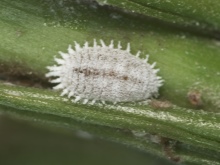
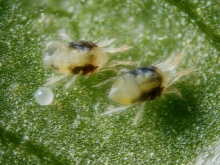
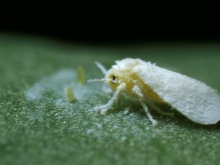
Summing up, we can say that the Washingtonia palm tree is perfect for both a winter garden and an apartment. The main thing is to properly care for the plant.
How to properly transplant a palm tree, see below.































The comment was sent successfully.